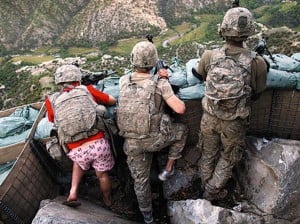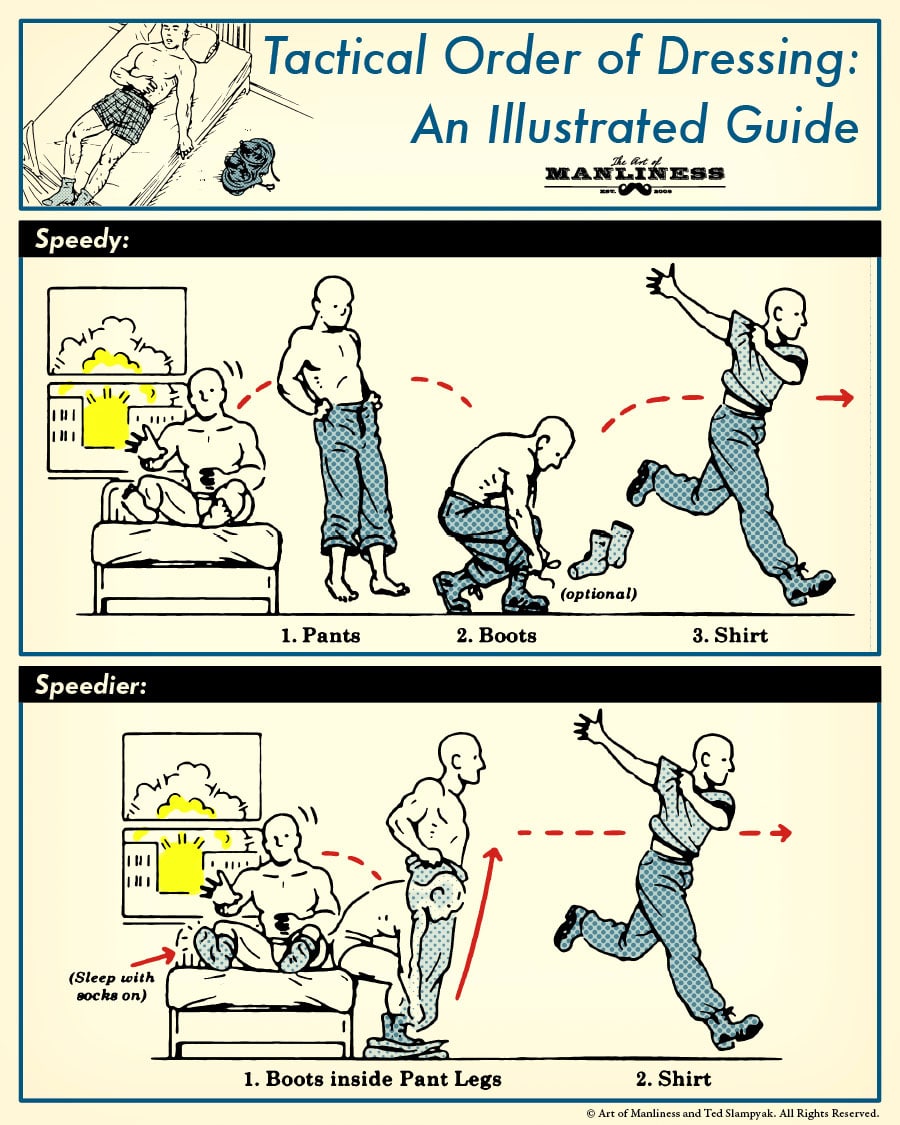From the blog of the excellent Art of Manliness: If attempting to save someone from drowning, it’s best to disrobe before you jump in, especially if they’re in open water, and a ways away. Clothes and shoes will only weigh you down, and make a difficult task much more difficult. The weight of your soaked garments may end up sinking the both of you. Of course every second matters when you’re trying to save someone, so you have to be able to undress with lightning speed.
The 1952 edition of the Handbook for Boys (the Boy Scout manual), admonishes young men to be able to strip down to their underpants or swim trunks in 20 seconds or less, holding up 15 seconds as the ultimate goal. The manual includes a diagram of how this can be accomplished, recreated here:
The original illustration lacked captions, but the sequence seems to go like this:
- Remove coat while removing your shoes.
- Slip your shirt off your shoulders as you step out of your pants.
- Remove your arms from the sleeves of the shirt. (It’s hard to tell from the original illustration, but the figure may be re-buttoning one of the buttons on his shirt here, perhaps to turn it into a more effective towing device.)
- Peel off your socks as you clamp your shirt between your teeth.
- Jump into the water.
- Extend your shirt to the victim to hold onto. Even when you get into the water with the victim, it’s best to have them hold onto something and tow them ashore, rather than getting close enough to get clawed, grabbed, and/or kicked. If you don’t have something to extend to him or her, swim behind them, and wrap your arm around their chest, keeping their head above water. Swim ashore.
- Throughout every step, you should keep your eyes on the victim, so you don’t lose track of where they are, and know if they slip underwater.
Then there's the tactical order of dressing:
If you were suddenly awoken in the middle of the night and needed to go outside to fight off a threat or evacuate from your home, in what order would you don your clothes?
 |
| David Guttenfelder. AP |
First you pull on your pants, because you’re going to need something to protect your lower body from brush, debris, hot shell casings, and what have you. Then you’ll put on your boots. If you’re not going far, you might be able to get by in barefeet, but you’ll need to be shod if you’ll be moving out over rough terrain.
Of course, if a threat is truly imminent, you may need to face it down in whatever it is you wore (or didn’t wear) to bed. Like this soldier in Afghanistan who was roused from sleep by enemy fire on his post in eastern Afghanistan, and took on the enemy in his pink “I Love New York” boxers.
More at the Art of Manliness blog.
Related posts:
Because it's important to always be battle-ready: How to Poop Like a Samurai.
Dave Barry's Manliness Manifesto is a hoot.






